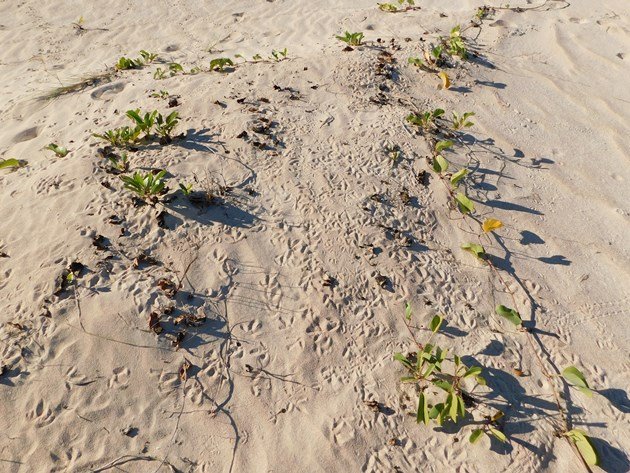
This year marks the twentieth year that we have observed Pied Oystercatchers nesting along Cable Beach. We keep an eye on the 23 kilometre length of beach that runs from Gantheaume Point to the southern side of Willie Creek. There are usually 16 pairs of Pied Oystercatchers nesting along this length of beach from late June. Their success rate is pitiful and can hardly be called successful at all. Last year not a single chick survived and there is much predation of both eggs and young birds along the length of beach. We have come to accept that the time that we do get to observe the Pied Oystercatcher parents with the young is precious each year.
The first pair of Pied Oystercatchers to lay eggs this year was the same as last year. They reside just to the north of the rocks and it is exactly where the camel rides go and also where four-wheel drives are allowed to drive on the beach. It is a busy section of beach, but this pair of Pied Oystercatchers have had success in the past. Once the chicks are a few days old they walk them a couple of kilometres north to be closer to a reef that is exposed on big tides.
In the header photo you can see where the Pied Oystercatcher family stopped and rested together for a while. Despite the bright colours of the birds they can be quite well camouflaged in the dune vegetation. Tracking the birds is useful and on some occasions we have not seen the number of chicks that are still alive, but from the recent prints in the soft sand we can determine the number. The photo below clearly shows recent tracks of two adult Pied Oystercatchers and two chicks.
Footprints for two adults and two chicks
The family of four Pied Oystercatchers were on the top of the dunes and were heavily camouflaged in among the vegetation. One chick has its back to us next to the bright green leaves next to the left adult Pied Oystercatcher in the photo below.
Pied Oystercatcher family
One interesting observation we see sometimes is the adult Pied Oystercatcher stretches its neck upwards and “bristles” the feathers up in a sort of threat when birds of prey fly over. Whistling Kites and Black Kites are common in Broome and if they get too close the adult Pied Oystercatchers will fly up at them. The adult Pied Oystercatchers call out and the chicks hide as best they can until they call in a different tone to let them know that the area is safe once again.
Adult Pied Oystercatcher with “bristled” tall neck and chick
One of the Pied Oystercatcher chicks is clearly the first to hatch and larger. The first egg laid is not necessarily the first to hatch and often there is a day in between when they hatch. As soon as the second egg has hatched the adults move the chicks away from the nest. The egg shell is also removed from the nest site once the chicks hatch out. The Pied Oystercatchers call out to the slower, smaller chick as they wander the dunes. The adults collect food from among the vegetation, but also take it in turns travelling down to the shoreline for food. Returning with damp feathers also helps to keep the young birds cool on hot days. Despite it being winter in Broome we are still experiencing day time temperatures around 32c/90f.
Pied Oystercatchers and chick
Pied Oystercatcher and chick
Smaller chick climbing a dune
I have written a lot about all of the pairs of Pied Oystercatchers along this stretch of coastline over the years and you can find more articles that I have written here. I enjoy watching the Pied Oystercatchers throughout the year along our coast, but there’s a lot more to observe at this time of year!

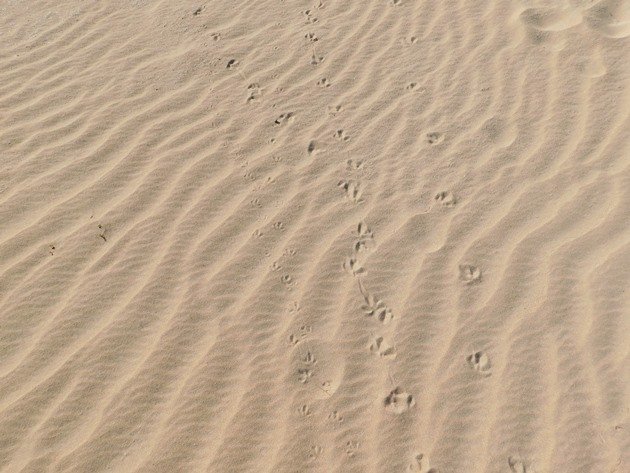
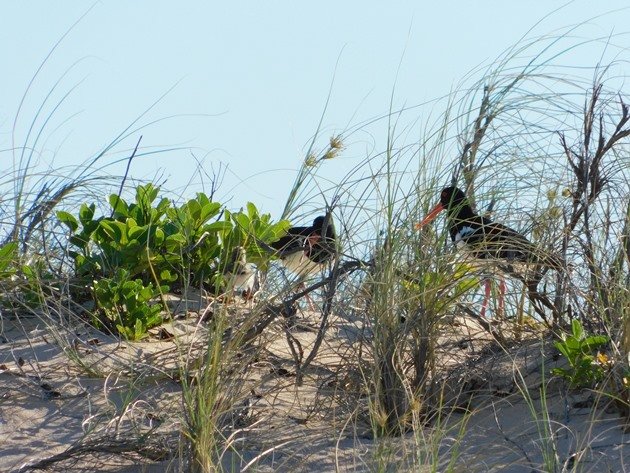
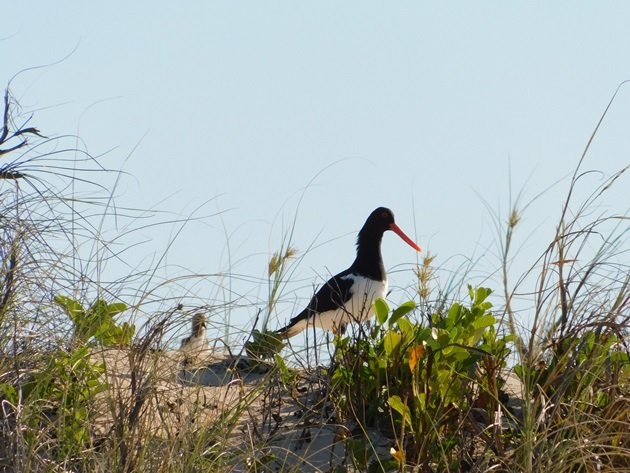
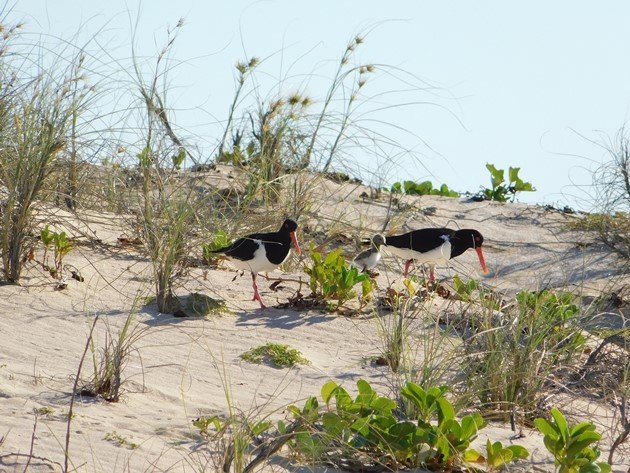
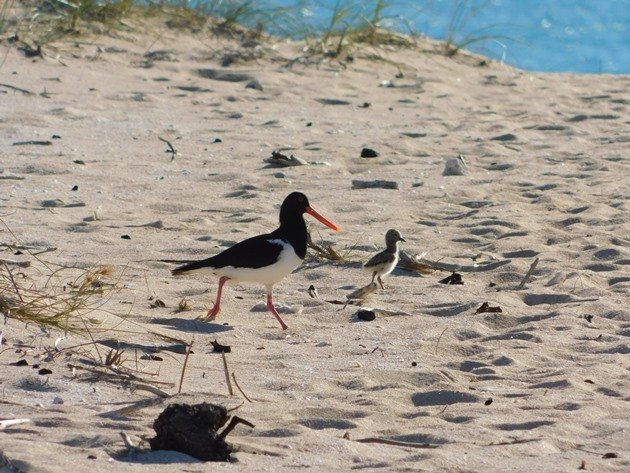
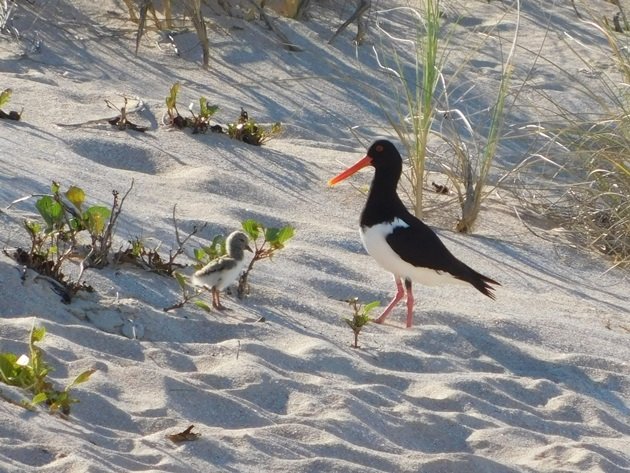
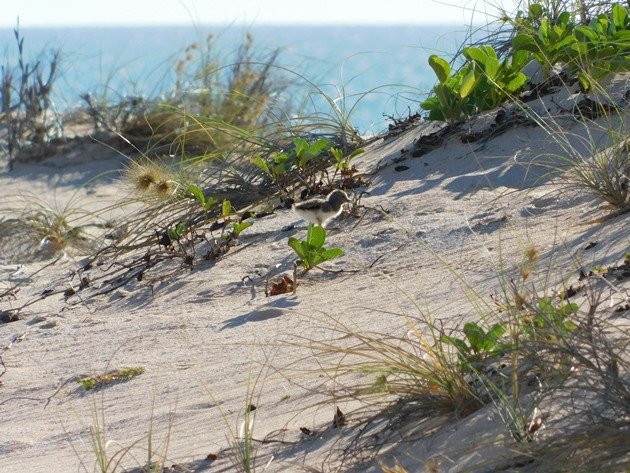










What beautiful photos of lovely birds and magical babies. It’s so sad their nesting ground holds so many perils. Let’s hope these two survive!